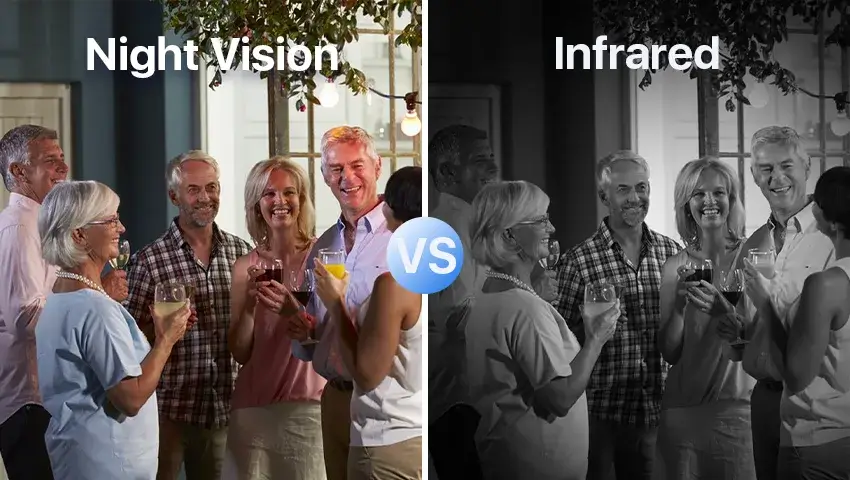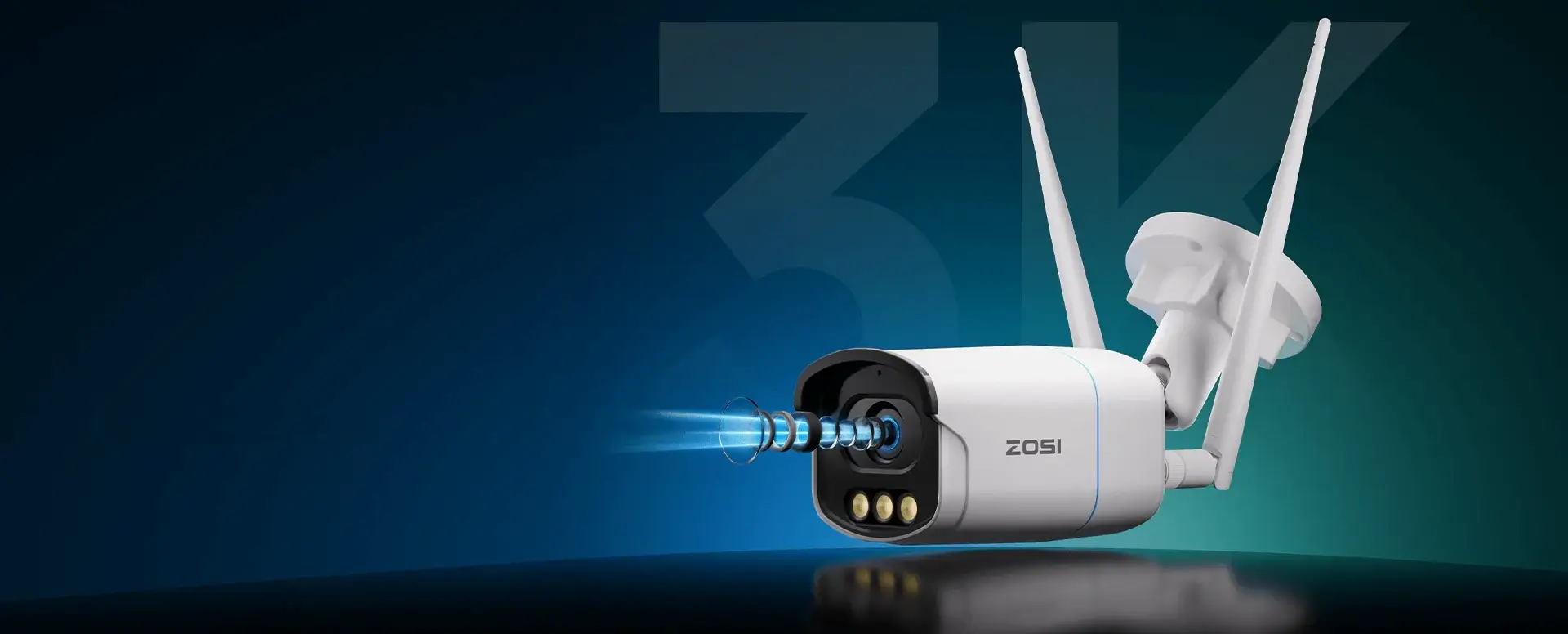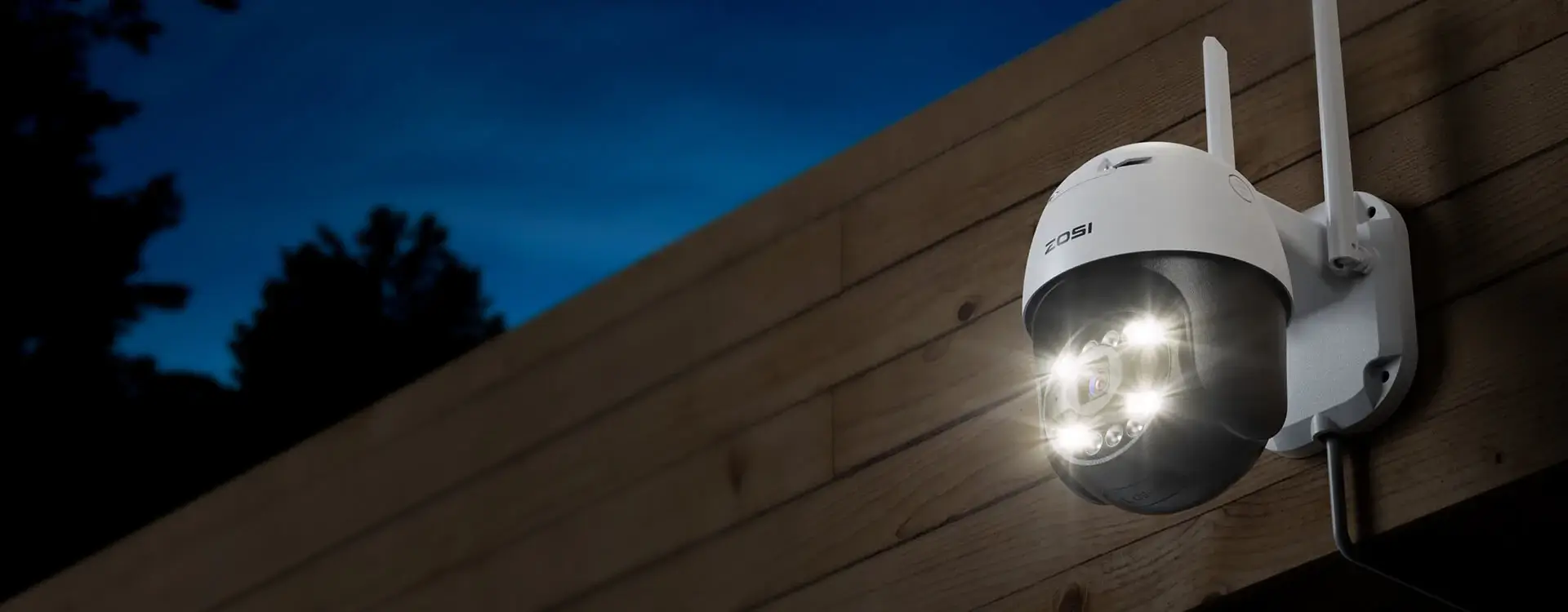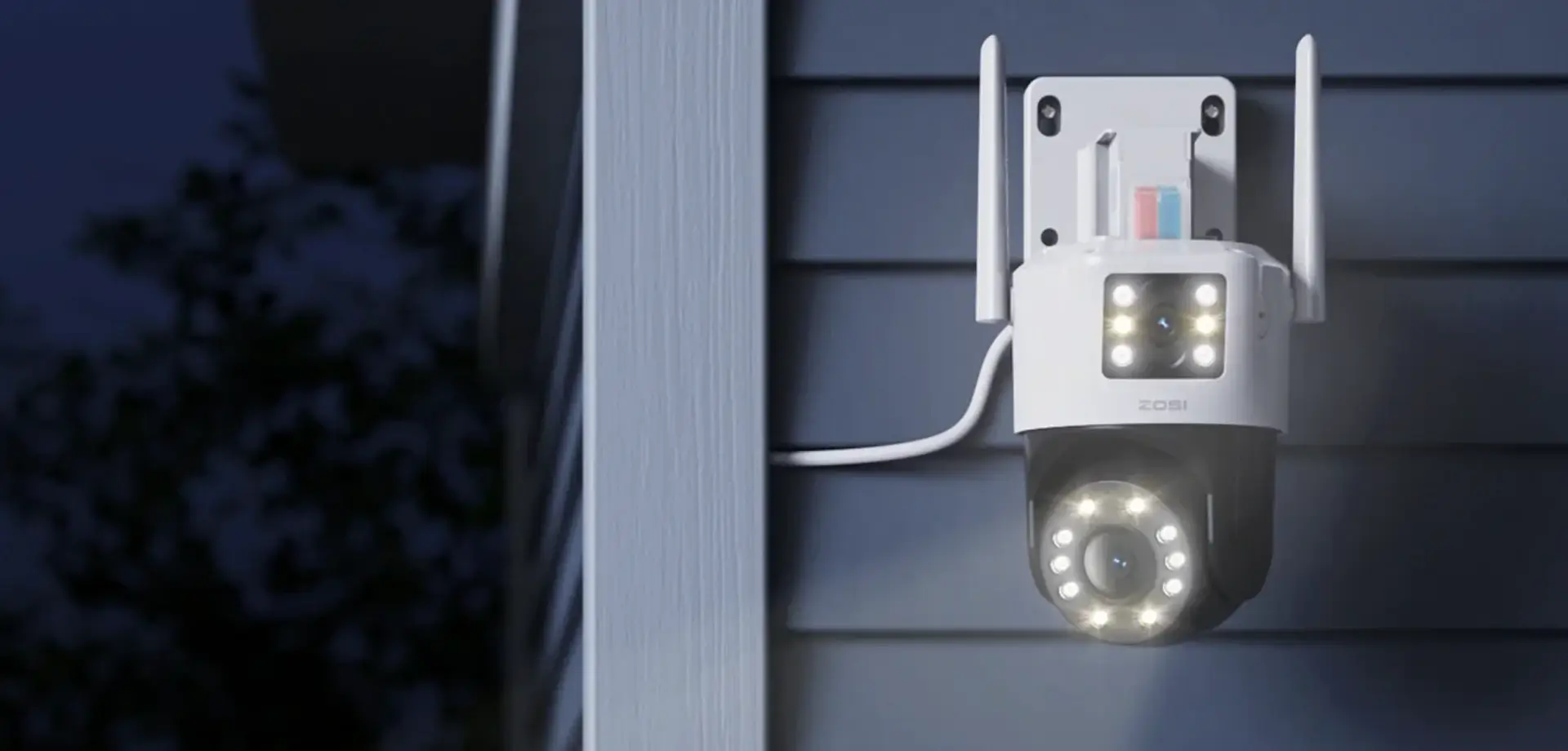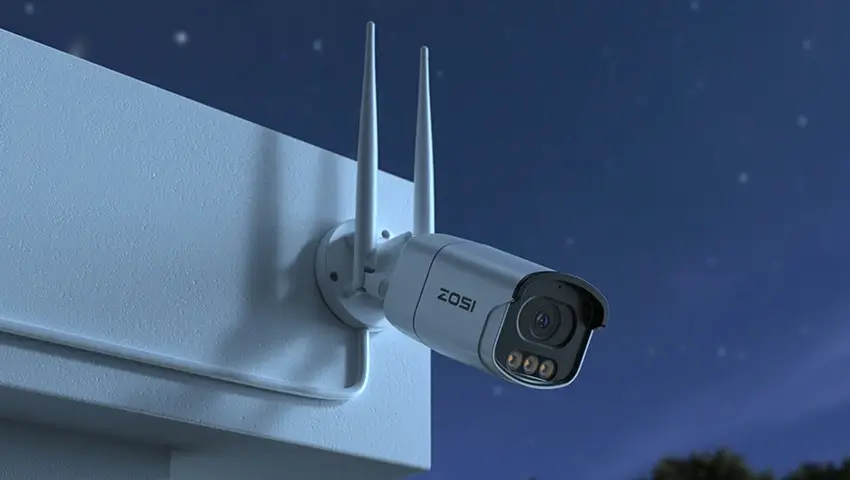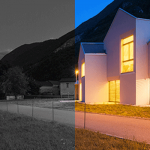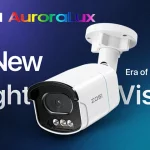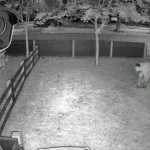When it comes to protecting your property after dark, you need technology that can “see” where human eyes fail. That’s where Night Vision vs. Infrared technologies come into play. While both serve the purpose of enhancing visibility in low-light or no-light conditions, they use different methods to achieve this. But what do these technologies really mean, and how do they differ?
In this article, we’ll break down each concept and compare their effectiveness in various scenarios.
Contents
What is Night Vision?
Night vision is all about enhancing the available light, allowing security cameras to deliver clear footage even when lighting is minimal.
How Does Night Vision Work?
Night vision technology works by collecting whatever light is available in the environment—whether from streetlights, moonlight, or other low-level sources. It then amplifies this light using image sensors to provide a clear, often full-color image. Unlike infrared, night vision can provide more realistic visual feedback by retaining color details.
Night vision works best in environments where at least some light is present, such as urban areas or places with a natural light source like the moon. It can’t work in total darkness but excels at providing critical detail, like the color of clothing or vehicles.
What is Infrared (IR)?
Infrared (IR) technology, on the other hand, enables cameras to capture images in complete darkness. It works by using invisible infrared light that reflects off objects, making them visible to the camera’s sensor.
How Does Infrared Work?
Infrared cameras use IR LEDs (Light Emitting Diodes) to project invisible infrared light across the camera’s field of view. While this light is invisible to the human eye, the camera’s infrared-sensitive sensors can detect it. This allows the camera to generate black-and-white images in environments with zero ambient light.
IR cameras are ideal for places where lighting is limited or non-existent, such as rural areas, construction sites, or warehouses. Though they only produce monochrome images, these images are often sharper and clearer in absolute darkness than night vision images.
Night Vision vs. Infrared: Breaking Down the Differences
Now that you have a better understanding of both technologies, let’s explore the key differences between night vision and infrared.
Light Sources: Ambient Light vs. Infrared Illumination
Night Vision depends on ambient light (moonlight, streetlights) to produce a clear image. It can’t function in total darkness but performs exceptionally well in low-light environments.
Infrared creates its own illumination using IR LEDs, making it ideal for scenarios with no available light. It works in total darkness by using invisible light, producing a black-and-white image.
Image Clarity: Color or Black and White?
Night Vision delivers full-color images, which can be useful for distinguishing specific details like clothing color, car models, or other important identifying markers.
Infrared only produces black-and-white images, but these are often sharper and provide greater contrast in environments with no light at all.
Range and Coverage: How Far Can They See?
Night Vision is generally limited by the amount of ambient light. The darker the environment, the shorter the effective range of the camera. It performs best in well-lit environments.
Infrared cameras typically have a longer range in pitch-black environments because they create their own light. IR can illuminate objects hundreds of feet away depending on the strength and number of IR LEDs in the camera.
Cost and Maintenance: What’s More Affordable?
Night Vision cameras often require less energy and fewer components, making them more affordable than their infrared counterparts. However, they may need additional lighting sources for optimal performance.
Infrared cameras are generally more expensive due to the inclusion of IR LEDs and advanced sensors, but they are highly reliable in pitch-dark conditions without needing additional lighting.
Night Vision vs. Thermal Imaging vs. Infrared: Comparison Table
Let’s compare these technologies side-by-side for a quick overview of their key features.
| Feature | Night Vision | Thermal Imaging | Infrared |
|---|---|---|---|
| Image Source | Amplified visible and infrared light | Thermal energy (heat signatures) | Infrared radiation |
| Working Principle | Light amplification | Thermal sensor detection | Infrared sensor detection |
| Image Quality | High-resolution, natural color | Lower resolution, grayscale or false-color | Lower resolution, grayscale or false-color |
| Visibility in Darkness | Excellent | Excellent | Excellent |
| Ability to See Through Smoke, Fog, or Haze | Limited | Good | Good |
| Applications | Military, law enforcement, hunting, surveillance | Military, law enforcement, firefighting, industrial, automotive | Military, law enforcement, security, surveillance, industrial |
Infrared Binoculars vs. Night Vision: Pros and Cons
Understanding the pros and cons of each option is essential for making the right choice.
| Feature | Infrared Binoculars | Night Vision |
|---|---|---|
| Advantages | – Ability to detect heat signatures in complete darkness – Can see through smoke, fog, and other atmospheric conditions – Useful for security and surveillance applications | – High-resolution, natural-looking images – Excellent visibility in low-light conditions – Versatile applications in military, law enforcement, and outdoor activities |
| Downsides | – Lower image quality compared to night vision – Grayscale or false-color image representation – Potential interference from ambient heat sources | – Dependence on available light sources – Limited ability to see through smoke, fog, or haze – Generally more expensive than infrared technology |
When Should You Choose Night Vision or Infrared?
Both technologies have unique advantages, so the right choice depends on your specific environment and needs. Here are the best use cases for each:
Night Vision for Color Clarity in Low Light
Best for: Well-lit residential areas, parking lots, and areas where some ambient light is available.
Why: If you need to capture clear, color images to identify fine details like faces or license plates, night vision is the better choice. Night vision cameras are perfect for environments where some light is always present, even at night.
Infrared for Total Darkness and Long-Range Surveillance
Best for: Rural properties, warehouses, or locations with little to no light sources.
Why: Infrared cameras excel in pitch-dark environments where night vision cameras would fail. They provide clear, monochrome images over long distances, making them ideal for remote or isolated areas.
Top Picks Of Night Vision Security Camera Recommendations
At ZOSI, we offer a wide range of security cameras with both night vision and infrared options to suit your specific needs. Here are a few of our top recommendations:
Full-Color Night Vision Security Camera in Low Light
Delivers stunning, full-color night vision, even in near-total darkness, with its ultra-large f/1.0 aperture lens and AI ISP technology.
5MP AuroraLux Security Camera - C186
- 3K/5MP Super HD
- AuroraLux True Color Night Vision
- 3000K Neighbor-Friendly Warm Light
- Smart Person/Vehicle Detection
- Light & Siren Deterrence
- Two-Way Audio Talk
- 128GB SD & PoE NVR
- IP66 Waterproof Design
Reliable Infrared Security Camera in Total Darkness
Offers superior infrared performance with long-range visibility in complete darkness, perfect for rural properties or unlit areas.
C296 - Pan Tilt IP Security Cameras
- 4K Ultra HD/5MP Super HD
- Starlight Color Night Vision
- Pan & Tilt
- PoE/WiFi Connection
- Light & Siren Alarm
- Upgraded AI-Powered Detection
- 2-Way Audio
Best of Color Night Vision and Infrared Security Camera
Combines the power of both night vision and infrared to ensure clear footage in both low-light and total darkness.
8MP PTZ Wifi Outdoor Camera With Dual Lens - 1NC-298
- 4MP+4MP Dual Lens
- Dual Lens Achieves Ultra-wide Field Of View
- AI Person Detection and Auto Tracking
- Starlight Color Night Vision
- Smart Motion Alerts Push
- Two-way Audio & Customize Voice Alerts
- SD Card Storage & Cloud Storage
FAQs
1. Which is better, infrared or night vision?
The choice between infrared and night vision technology depends on your specific application and needs. Infrared is ideal for environments with no light at all, allowing cameras to detect heat signatures and deliver high-contrast black-and-white images in complete darkness. On the other hand, night vision is better suited for capturing natural-looking, full-color images in low-light conditions, making it ideal for identifying details like clothing color or vehicle types when some ambient light is available.
2. Do all night vision cameras use infrared?
No, not all night vision cameras rely on infrared technology. Some night vision cameras amplify available visible light without using infrared illumination. However, many do include infrared LEDs to improve visibility in extremely low-light situations. Infrared illumination allows cameras to work in near-total darkness, but when some light is present, visible light amplification provides more realistic color images.
3. Does the military use night vision or infrared?
The military employs both night vision and infrared technology for various operations. Night vision is commonly used for navigation, covert operations, and target identification, offering clear visuals in low-light scenarios. Infrared technology is frequently utilized for thermal imaging, surveillance, and target acquisition because it allows detection of heat signatures, even in total darkness, making it essential for spotting hidden or camouflaged objects.
Conclusion
When it comes to choosing between Night Vision vs. Infrared technologies, understanding your environment and security needs is crucial. While night vision provides clear, color-rich images in low-light environments, infrared excels in total darkness by detecting heat signatures. By evaluating your specific requirements, you can select the right technology for optimal security. In many cases, combining both technologies gives you the best of both worlds, ensuring that you’re covered in various lighting conditions.
